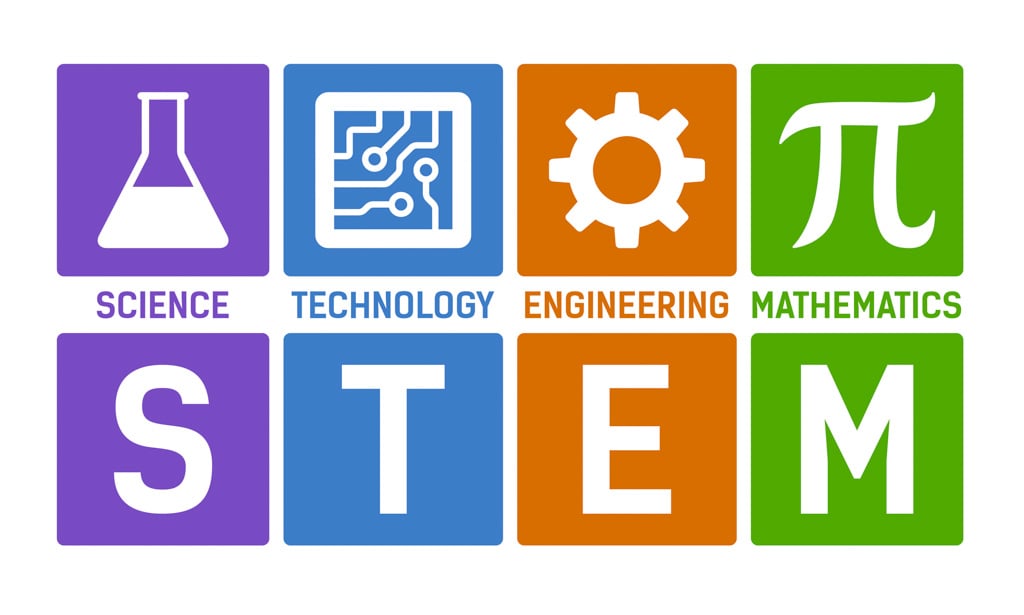We often ask children what they “want to be” when they grow up. Astronaut, chef, teacher, or, for 8-year-old me, President. Encouraging dreams are healthy and important regardless of how those dreams change over time. As parents we often worry about our children’s future, what they will become, how they will interact with and impact the world around them. And these questions are more important now than ever as the world becomes smaller and prosperous; well-paying jobs are harder and harder to find and keep.
One answer to this question is clear: if we want our children and our nation to continue to be successful and competitive on a world stage, then STEM should be an integral part of their future. STEM is the future of the economy, the key to solving real world problems like hunger and resource depletion, and the arena with the most promising occupations for our children’s future. How do we, as parents who grew up in a less technological world, balance instilling a curiosity and ingenuity for STEM topics with the many other demands that homeschooling, parenting, and life bring?
What is STEM?
STEM is an acronym for science, technology, engineering, and mathematics. STEM goes beyond just studying topics within those 4 areas and is concerned with how they integrate with one another, critical thinking, discovery, and project-based learning. STEM workers and curriculum seek to use their understanding of science, technology, engineering, and math to better understand the world around them, create new technologies, and solve critical problems. STEM goes beyond experiments and cause-and-effect thinking, and dives deeply into first hand discovery, real-world application, and innovation.
The Impact of STEM
Our kids have grown up in a fast-paced, ever-changing digital age. And, as technology gets more and more important to everyday life, understanding those technologies and using them to our advantage becomes even more critical. For our students this goes beyond using computers to gain a real-world understanding of how technology can help enrich and change lives.
We have big problems in our world today and STEM workers are the key to solving them. Critical thinking, something that is often lacking in formal education, is the key to helping our students succeed and enjoy STEM topics at a young age. And it’s practical too, because STEM workers are more in demand and are paid higher wages. From analyzing climate change, to solving world hunger, to helping save endangered species, STEM jobs are not only critical they’re really cool!
STEM Learning Every Day
When we learn with all of our senses we are more engaged and able to remember and enjoy what we’re learning. The good news is that STEM learning is often all hands, eyes, and minds on deck! The key to encouraging discovery and passion for STEM is to make it real, engaging, and flex your STEM thinking muscles daily.
What’s great about homeschooling is that you don’t need formal “science class” to encourage STEM exploration. In fact, most excitement about learning occurs when we make connections across subject matter. That’s what “aha” moments are made of, when a student can connect one idea to something they already know or to a different subject and the light bulb goes on brighter than usual.
Start with STEM
Integrating STEM topics into other content areas isn’t as difficult as you may think. It’s all about your approach. The key is to start the lesson with STEM in mind. Let’s say you’re learning about the Civil War. Most lessons would start with the causes and then move on to the events and battles. But, imagine if you started a unit on the Civil War by researching the invention of the printing press in the 1830s and how the invention allowed for the quick sharing of communication and information throughout the states. Imagine if instead of reading about the injuries of soldiers, students researched why the Patent Office granted 133 patents for artificial limbs and prosthetic between 1861 and 1873. Lessons that begin with STEM topics, and allow students to make connections and think critically are more engaging and beneficial.
Who said language arts can’t involve chemistry and mathematics? How fun would it be to read Charlie and the Chocolate Factory after experimenting with making different kinds of candies using different materials? Students can make rock candy using sugar and water, measure, examine and classify the crystals under a microscope, and then enjoy their chemical creations while reading the book. Hands on, scientific learning brings literature to life!
Integrating STEM topics and exploration naturally into our homeschooling and classroom lessons is essential if we want our children to have a bright future. But, it doesn’t have to be a chore! Understanding the impact and importance of STEM, integrating it into every subject, and allowing students to dive deeply into the topics that interest them are the keys to helping the future generation take hold and appreciate the value of science, technology, engineering, and mathematics.







